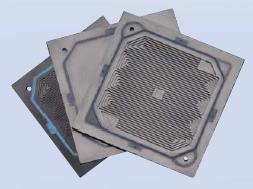Manufacturing Technology
We apply low-cost molding processes for serial production of bipolar plates as well as CNC machining for manufaturing of prototype plates.
Experienced in-house tool shop uses the most advanced equipment for mold manufacturing.
We offer support to promote designs that are highly compatible with our molding process and our modular mold technology.
|
Further Advantages of Bipolar Plates
Product quality has been proven over the years for a wide range of fuel cell applications.
Plates have an excellent electrical and thermal conductivity (as rated by our customers).
|
Special hydrophilic or hydrophobic surface modifications
Improve the operational characteristics of bipolar plates without influencing their favorable electrical properties.

Hydrophilic surface

Hydrophobic surface
|



